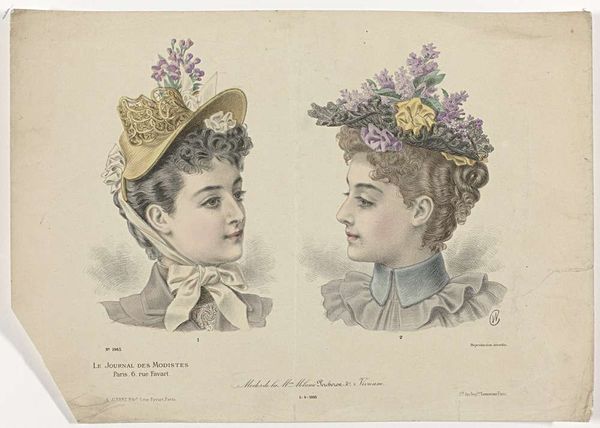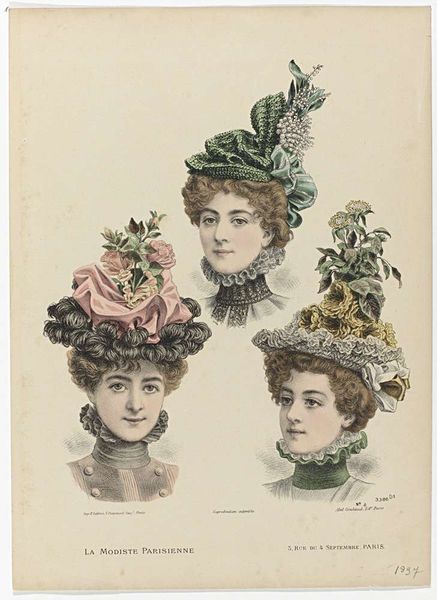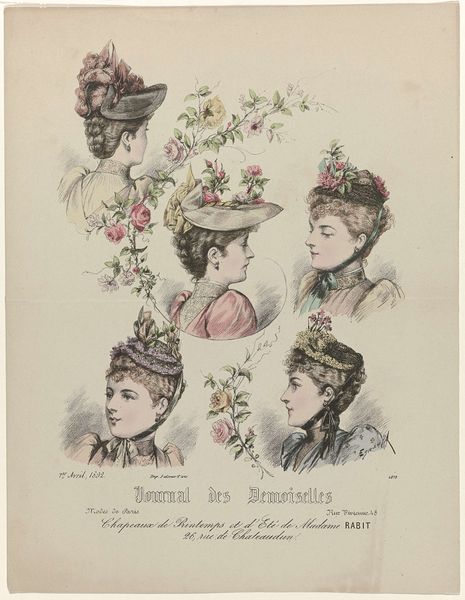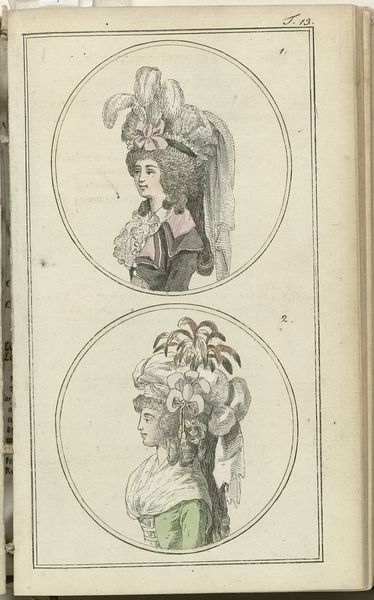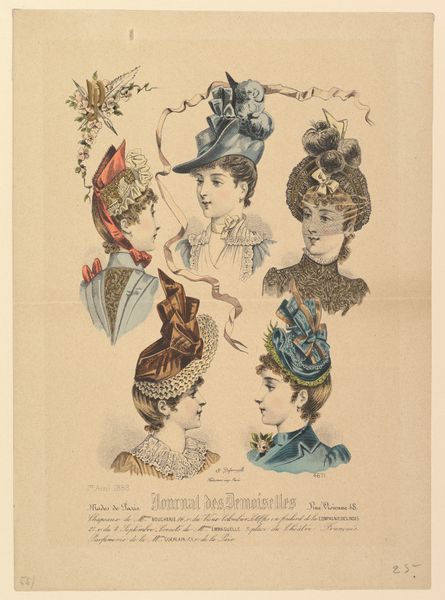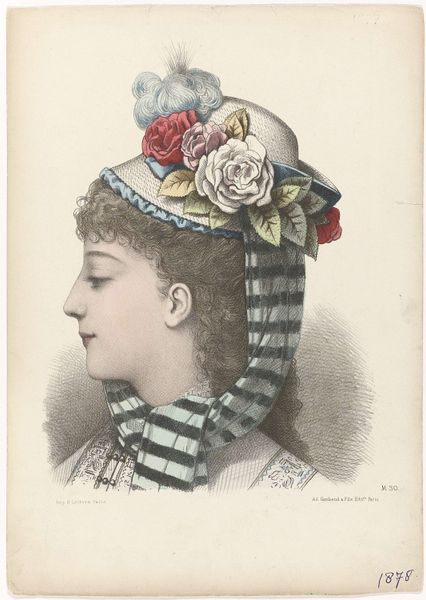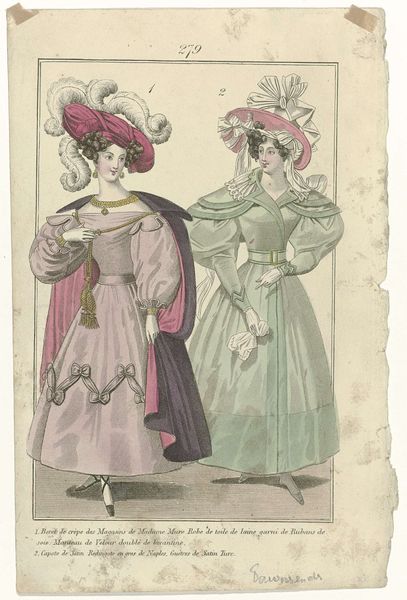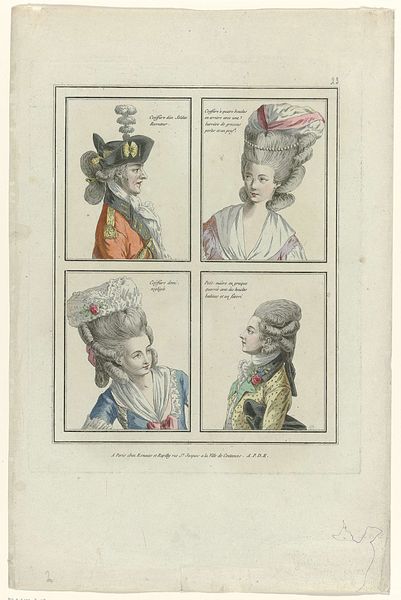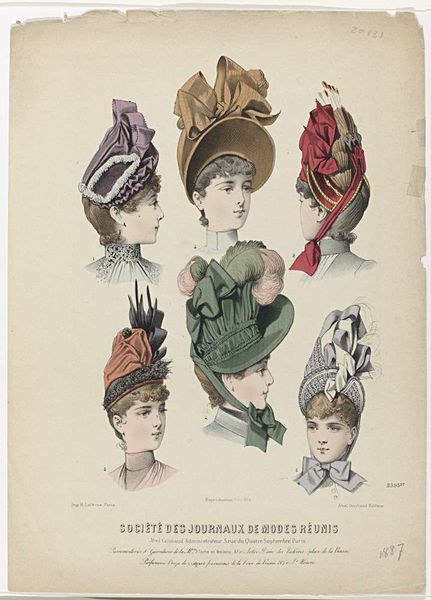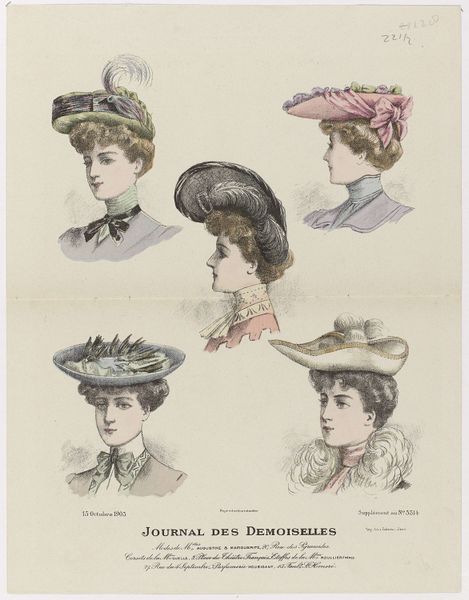
graphic-art, print
#
portrait
#
graphic-art
#
art-nouveau
# print
#
coloured pencil
#
watercolour illustration
#
watercolor
Dimensions: height 279 mm, width 386 mm
Copyright: Rijks Museum: Open Domain
Editor: So, this is *Le Journal des Modistes*, a print from 1892 showing women's fashion. It has this kind of dreamlike quality, almost like an illustration from a fairytale, what do you make of this artwork? Curator: What immediately strikes me is the deliberate staging of these two profiles. They aren’t simply showcasing hats, they’re subtly projecting ideals of feminine allure in that period, consider the gazes and the posture - do they remind you of figures from other popular imagery from the time? Editor: I hadn't thought of that. Now that you mention it, it is similar to the romantic heroines that show up in other turn of the century images. Curator: Exactly. Note how the embellishments on the hats, like feathers and ribbons, amplify a sense of luxurious excess but at the same time serve to highlight an aspiration, a cultural fantasy. How do these elements function as symbols? Editor: They speak to wealth and status but they also show the fashion and taste of the time period. It is fascinating to consider that what was luxurious then might feel so different today! Curator: Precisely! And observe how the artist utilizes the delicate watercolor and detailed linework. Does the medium itself contribute to the dreamlike quality we spoke of earlier, creating a softened reality? Editor: Yes, the watercolor gives a gentle aura to the piece and makes it look timeless. It brings this intimate and graceful element. I see it now. Curator: Indeed. These aren't just pictures of hats, they’re reflections of societal dreams and ambitions, mirrored in the visual language of the era. Editor: It makes me see fashion plates in a different way, understanding that they're not just about garments, but about identity. Thanks so much for your expertise. Curator: My pleasure. Recognizing those embedded cultural meanings certainly enhances our appreciation, doesn't it?
Comments
No comments
Be the first to comment and join the conversation on the ultimate creative platform.
